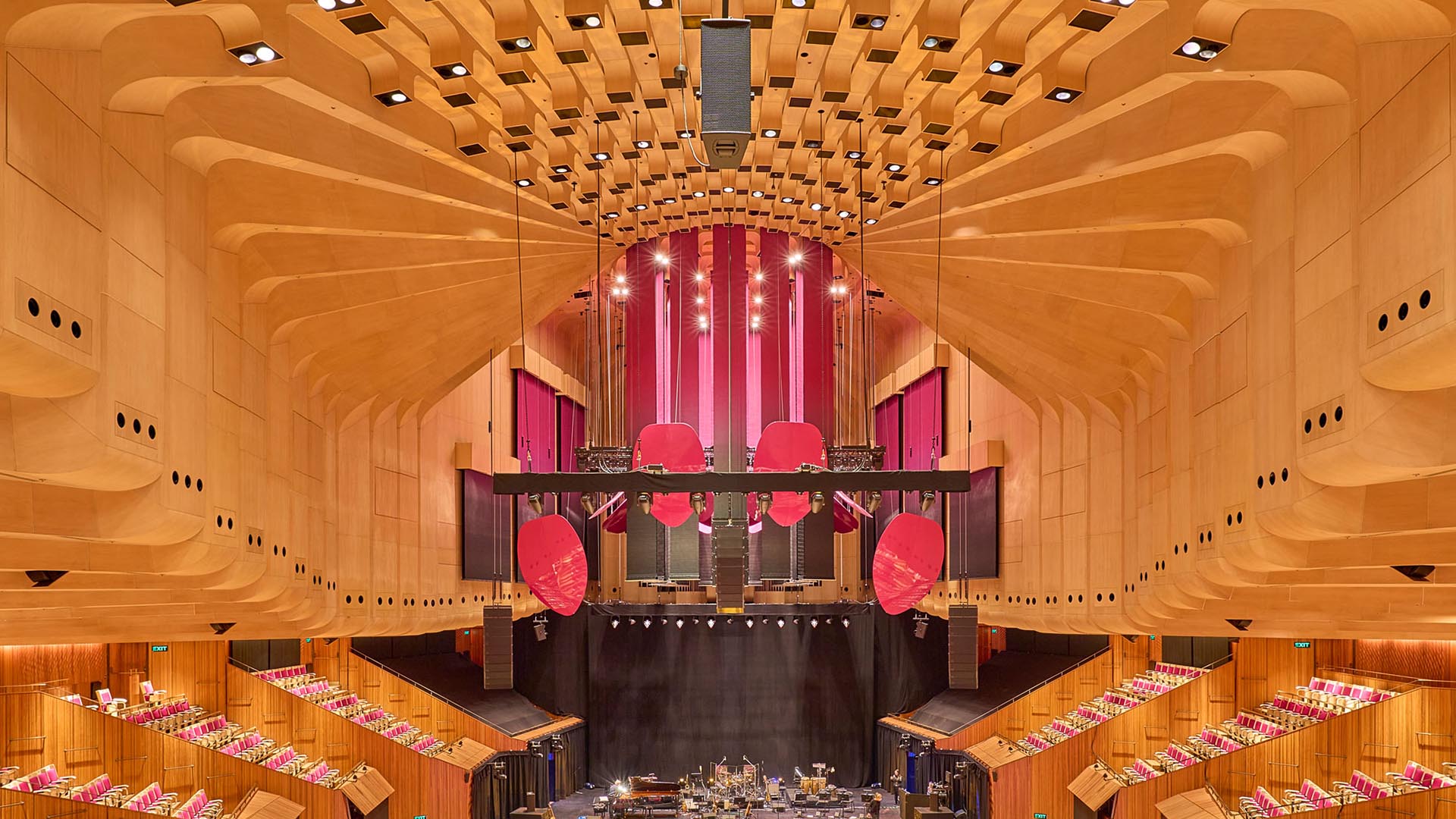d&b meets the unique challenges of Australia’s most iconic performance venue.
THE VENUE
The Sydney Opera House celebrated its 40th birthday by embarking on a 10-year period of renewal leading up to its 50th (later in 2023). The Opera Theatre was given plenty of love back in 2017/18 and then it was the Concert Hall’s turn.

THE CHALLENGE
When originally opened, the Concert Hall’s purpose was to be the home of the Sydney Symphony Orchestra, full stop. Today, it’s still the SSO’s home ground, but the programme is far more varied — Wagner one day, Wu Tang Clan the next. Not only is the programming hugely diverse — from entirely acoustic performances, to high-intensity amplified — the turnaround times are tight (there’s a staggering 98% annual occupancy across its venues). The renewal would address these realities. The three main prongs were: improved accessibility; an acoustics upgrade, to improve the natural sound of the hall; and, finally, a theatre systems and stage machinery upgrade to provide better loudspeaker coverage of the hall, cater to a contemporary demand for heavier stage sets, and allow the crew to reset in a timely manner.
THE FIX
The Concert Hall has a new PA, based on d&b KSL, which replaced the d&b J-Series system installed in 2008.
Roy Cressey, the Head of Sound & Audio Visual during the Concert Hall project, explains the thinking: “What we really wanted to focus on, was making sure the true fundamentals of the system coverage were absolutely exemplary. In a room like the Concert Hall, it’s easier said than done to ensure we have speakers in all the positions they need to be.”
The design is based around left/centre/right arrays of d&b KSL, a flown array of SL-Subs, all complemented by distributed fills. The flown arrays are on winches to respond to the automated scene changes. The three KSL arrays are permanently flown (lifted up and largely out of sight in the acoustic modes, and lowered for amplified performances) while the subs are rigged and flown when needed. It’s a very neat, well-resolved look.
“The overriding factor behind the KSL choice was its pattern control, and in that regard it’s exceptional. We wanted to ensure we had a good line length of speakers [10 per hang] to give us that control, as well as give us all the headroom we could possibly need.

“There are general benefits of flying the subs. A single source for coherence in this room is fantastic. And then having the distributed fills all around the room has been a significant improvement to the consistency of coverage across the auditorium.
“The amplifiers are a new generation as well. The old system was on D12 amps and we’ve now incorporated Array Processing, which is the icing on the cake. We don’t want to use Array Processing to fix any problems — such as improper speaker placement — but we want Array Processing to electronically make up that last 5% for the deficiencies in the mechanical deployment of a line array. Amplifiers are a mix of d&b 40D, D80 and 10Ds.
“d&b has been great through this. We’ve got a great working relationship and they’ve gone above and beyond, We had some unique requirements with the rigging and their engineering department was of great support in developing custom flying frames for the line arrays and subs. Gareth Kelbrick from d&b, Doug Pringle and Dave Jacques from NAS joined us for commissioning and product training and they’ve been of great assistance as well.”

THE RESULT
The Concert Hall is a very different venue to the one that debuted in 1973. The Sydney Opera House has opened it up to a whole host of different programming, but often they still had to say ‘no’. Now with the vastly expanded capability in the stage machinery and theatre systems that allow for streamlined resets, ‘no’ won’t be a word the Sydney Opera House will need to use very often in the future.
“We’re now far more efficient, which gives our team more time to focus on the creative side,” reflects Roy Cressey. “Tight timelines are a part of the job, by reducing our top of day set up and touring integrations, our in-house and touring engineers have more time in the day to get comfortable and focus on the art, and making the show the best it can be.”
And it’s paying off. The bush telegraph is already very positive: a gig at the Concert Hall is a great experience for everyone concerned.




















































